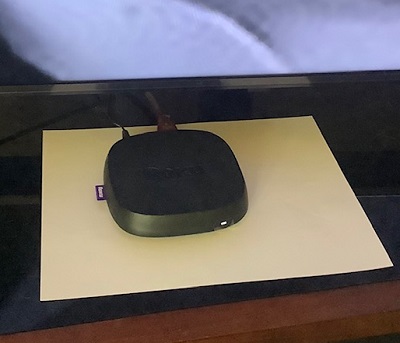If you have "cut the cable" and ditched cable tv but now have a streaming service like a Roku or Pluto TV that does not have any recording capability (commonly canned a DVR), you're probably wondering if you can add a DVR to your set-up without paying a monthly subscription, like you would have to with YouTube TV, to get DVR ability.
It IS possible, and while it is not initially cheap, it clearly pays for itself within a few months.
You're probably looking for:
- An add-on DVR which will record any show or movie you want. For example PlutoTV, which does not have a recording ability. Or live antenna TV. Or even output from games, camcorders, even smartphones.
- Plays back on any TV or device
- And is intuitive and easy to use
Options

There are add-on external DVR recorders
-
The ClonerAlliance UHD Pro, 4K Video Recorder gets great reviews. This is the one that works most like a cable box dvr. One limitation: it cannot change the change on your streaming device, so the streaming device must be turned on and on the correct channel you want to record. It can capture 4k video via HDMI Capture using a H.265/H.264 Codec,. It can record Cinematic 4K at 24fps and/or record up to 4K@30fps. No PC is Required, just an external USB hard drive (oor ssd drive) which you supply, and plug into the unit. This one will even record content-protected video.
-
HDML-Cloner Box Turbo, Next-Generation 1080p hdmi Capture Device and Mini Video Capture Box. - If you just want cheap and basic - WITHOUT content-protected copying, this one should do it. It does not have the 4K, just 1080p and no remote, but it is a standalone HDMI video capture recorder for video player, STB, game consoles, Press one button to record.
H.264 hardware encoder. Save video as MP4 to USB stick/ext.HDD. HDMI pass-through.
Do you need to sync 2 TV's to the same video source?
Other equipment needed and where to get it
- If you want to send the output to two tvs simultaneously: use an hdmi splitter (here https://amzn.to/3FQKzEf ) and
- an hdmi cable (I used a 50 ft cable, https://amzn.to/3WD9pyj which was 2/3 of the cost and your output device
- I used a Roku Ultra 4k ( https://amzn.to/3WBoZLn ) as the source, and I have also used a cable TV set top box.
They work exactly the same. Any source that can output HDMI will work.

Instructions
- Position the Roku (or cable box, DVD player or other source device) under the tv, in front (so the remote's signal can reach it),
- Connect the ClonerAlliance DVR between the TV and the Roku or other source with an hdmi cable into the input of the hdmi splitter.
In the photo at right, you can see hdmi cable with the red ends connected to the Roku and the splitter.
- You must be on the channel you want to record. The cloner/dvr only records whatever is coming into it. If you can program your source device to change channels, that is perfect!
That's all it takes.
Other: How to use multiple remotes or extend the remote's reach to both TV's locations.
You can use 2 remotes to change channels on the Roku (or other source device). You simply need an IR extender to take the remote's signal in the room with TV2 to the device under TV1.
If the main TV (TV1) uses universal device control, you can use it to allow the main TV1's remote to control the TV and Roku and leave the Roku remote by TV2 to change channels. If they are in separate rooms, you will want an IR extender ( https://amzn.to/3jtxGZ9 )
More equipment and sources
The new Roku 4k Ultra is amazing. With voice control, 4k streaming:
What about wireless video repeaters?
To send the video wirelessly from one source to another, like to take a cable box or roku and send it to a tbv in another room (with an hdmi, splitting the signal to duplicate on 2 tvs), you might want to try a wireless video transmitter and receiver.
In theory, they sound great. However, I've owned 3 different types and none of them worked well. However, the technology is constantly evolving and improving, so it may be possible to find one that is as good as an hdmi cable connection. It searching recently, I have found the cost to be prohibitive. Those which get good reviews around $130 and up. The really good ones usually go for $500 - $1000.
These get great reviews and are inexpensive,, in the $130 - $150 range, but I have NOT tested them myself.
- NAMCIM Wireless HDMI Transmitter and Receiver,
Says it is Plug & Play, No Delay, Ultra HD Wireless HDMI Converter Dongle Adapter, Streaming Video/Audio from Laptop, PC, Smartphone to HDTV Projector -
Wireless HDMI Transmitter and Receiver - Wireless HDMI Extender Kit,
Says it can do 4K at 30Hz Wireless HDMI Extender Dongle Adapter and it supports 2.4/5GHz for Streaming Video/Audio/Documents from HDMI video sources like a Laptop.
This one gets EXCELLENT reviews, but I have not personally tested it. Might be worth trying if you need a wireless approach.



